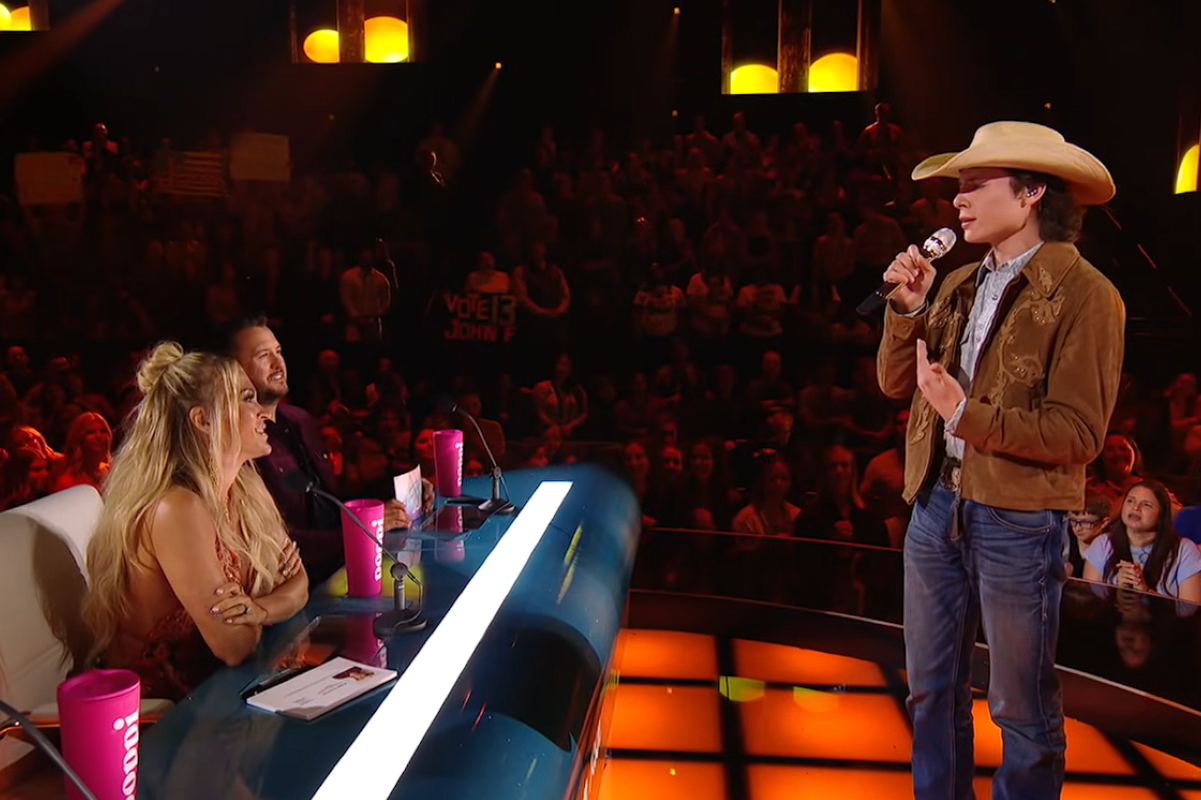
The Grand Ole Opry has long been a stage where tradition and new beginnings meet. On a recent night in Nashville, that spirit was alive when Carrie Underwood reunited with John Foster, the American Idol Season 23 runner-up, backstage at the Opry. The moment carried a mix of history, pride, and the excitement of seeing a new voice step into one of country music’s most respected circles.

For John Foster, the evening was especially meaningful. Earlier this year, he fulfilled a lifelong dream by making his debut at the Opry. Standing on that historic stage, he performed the hymn “How Great Thou Art,” a song deeply rooted in both gospel and country traditions. The hymn itself has been interpreted by countless artists over the decades, but it always demands a careful balance. It requires strong vocals, but even more importantly, it calls for humility and a sense of reverence. Audiences expect not just singing, but an expression of faith and emotion.

Reports from the night noted that Foster’s rendition of “How Great Thou Art” held the crowd in silence. He approached the hymn with restraint, letting the lyrics and melody speak rather than overloading it with unnecessary vocal flourishes. That choice made the performance stand out. For a debut at the Opry, it was a meaningful introduction: Foster presented himself as someone who values the roots of country and gospel music, while also showing the vocal ability that brought him recognition during his time on American Idol.
:max_bytes(150000):strip_icc():focal(775x355:777x357)/carrie-underwood-john-foster-042925-d64173826185434e812c25a10e49c9b2.jpg)
Carrie Underwood’s presence at the Opry that evening added another layer to the story. Underwood herself has a strong connection to the Opry, having been invited to join in 2008. Over the years, she has returned to that stage many times, delivering performances that highlight her own respect for tradition. Seeing her backstage with Foster was a reminder of how the Opry serves as a meeting ground for established stars and rising talent.
Carrie expressed her pride in John, noting how meaningful it was to watch him reach such a milestone so early in his career. For Foster, the encouragement from someone of her stature was undoubtedly significant. Their reunion was less about spectacle and more about recognition: an artist who has walked the path offering a nod to someone just beginning it.

It is worth noting that this reunion was not a duet or joint performance, but rather a meeting backstage. Still, the symbolism carried weight. Carrie represents the generation of artists who continue to hold the Opry as a central part of their identity. John, meanwhile, is stepping into that world, showing respect for the traditions that define it.
Looking ahead, the question is how Foster will build on this moment. An Opry debut, no matter how successful, is only the start. His choice of song suggests that he is mindful of the heritage he is stepping into, and his reunion with Carrie signals support from one of country’s biggest names. Together, those elements create a promising foundation.
In the end, the night was about more than just a meeting backstage. It was about continuity—the passing of encouragement from an established artist to a newcomer, both bound by the significance of the Opry stage. For fans of both Carrie and John, it was a reminder that country music thrives on tradition, mentorship, and moments where voices old and new share the same space.